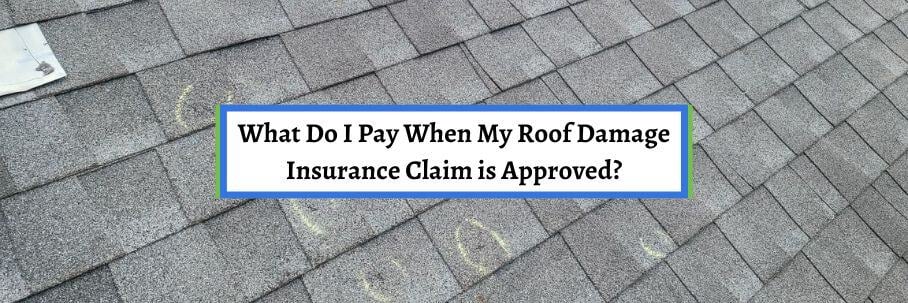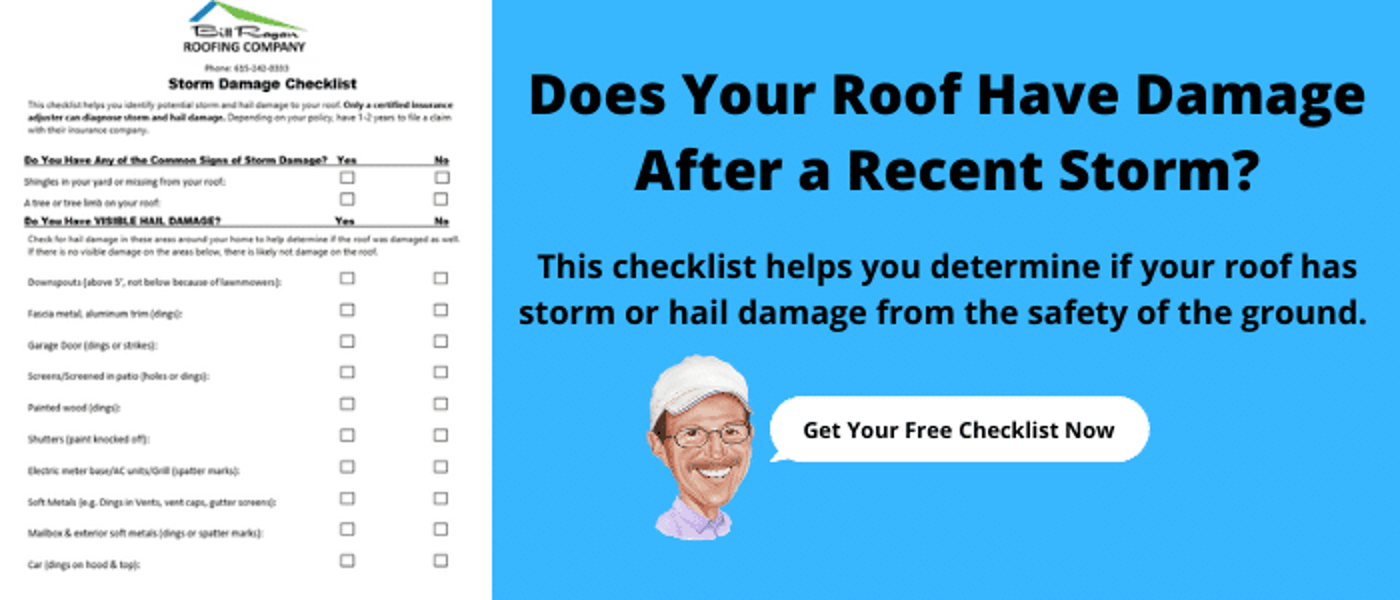What Do I Pay When My Roof Damage Insurance Claim is Approved?

Did your roof get damaged after a storm? Are you trying to decide if filing a claim is worth it?
Whether you answer yes to one or both questions, one of your biggest concerns is most likely what it’ll cost you. I understand paying for anything doesn’t seem fair after paying your insurance premium for years.
Unfortunately, you’ll always pay something once your roof damage claim is approved. But what exactly do you pay?
For over 30 years, Bill Ragan Roofing has helped homeowners like you with the confusion, headaches, and questions that come with insurance claims. So, let’s look at what comes out of your pocket once your claim is approved.
By the end of this article, you’ll know the three things you’ll pay for when getting your roof replaced through insurance.
You must pay your deductible when your roof damage claim is approved
When your roof damage claim is approved, you must pay your deductible. Some homeowners hear this and immediately start looking for ways around it.
But trying to avoid paying the deductible opens you up to one of the biggest problems in the roofing industry today: insurance scams. Once a bad roofing company knows the deductible is an issue, they’ll gladly offer to pay it to win your business.
Some homeowners jump at the opportunity, but this is illegal and outright insurance fraud. And guess who has to deal with the consequences? You.
I understand that saving money is important, but finding a way to avoid your deductible is not worth committing fraud. That’s why you should NEVER consider a roofer who’s willing to pay your deductible.
So, no matter what you hear or read, you must pay your deductible when your roof damage insurance claim is approved.
The price difference between the insurance estimate and the roofer’s estimate
ACV insurance policies will never cover the cost of a new roof because you only get the depreciated value of your roof. But if you have a Replace Cost Value policy, the insurance company gives you a payout for what it costs to replace your roof with a brand-new version of itself.
Unfortunately, even RCV insurance estimates usually don't fully cover a roofer’s estimate. They simply exclude certain line items, labor costs, or other things required to do the job right and be profitable.
You can supplement your claim to get more covered, but even after that, it doesn’t guarantee everything will get paid for. So, no matter your insurance policy, you’ll most likely be paying the difference between the two estimates.
A large portion of your new roof’s cost will be covered, but some homeowners still go looking for cheaper prices. If you look hard enough, I guarantee you can find a roofer willing to do it for the amount that insurance gives you.
But you need to ask yourself why they’re willing to do it for less than other companies. That’s why it’s crucial to research any company thoroughly before accepting their lower estimate and do your due diligence to determine why it’s so low.
Upgrades outside of your insurance estimate’s scope of work
As you just learned, an RCV policy provides a payout to restore your old roof with a new version. This means you’ll get the same material and components that were originally installed (if they’re not discontinued), but they'll be up-to-date with current manufacturing specifications.
However, some homeowners take advantage of a large chunk of the cost being covered to upgrade components or add things outside of the original scope of work. If you upgrade or add something, you’ll pay the difference out of pocket.
The most common insurance upgrade is going from 3-tab asphalt shingles to architectural asphalt shingles, mainly because 3-tab shingles are phasing out of the industry. However, homeowners also upgrade their ventilation system, underlayment, flashing, or another roofing material altogether.
Just know that some things must be added to adhere to building codes, such as drip edge. But insurance will cover the cost if your current roof doesn’t have it and your policy has a code upgrade stipulation.
How do you avoid falling victim to roof damage insurance scams?
Now you know what you’ll pay when filing an insurance claim for roof damage. No matter what, you’ll have to pay your deductible.
But the other two depend on your insurance company, policy, and if you want to upgrade anything in the scope of work. And most importantly, don’t go looking for a cheap price to reach insurance’s number.
Doing this makes you vulnerable to insurance scams and bad roofers looking to take advantage of unsuspecting homeowners. Unfortunately, insurance work brings out the worst in the roofing industry.
Dealing with insurance is bad enough, so the last thing you should have to worry about is being scammed. That’s why I wrote another article with tips to ensure this doesn’t happen to you.
Check out 6 Tips to Avoid Roof Damage Insurance Scams to learn how to spot scammy tactics and bad roofers from a mile away.


